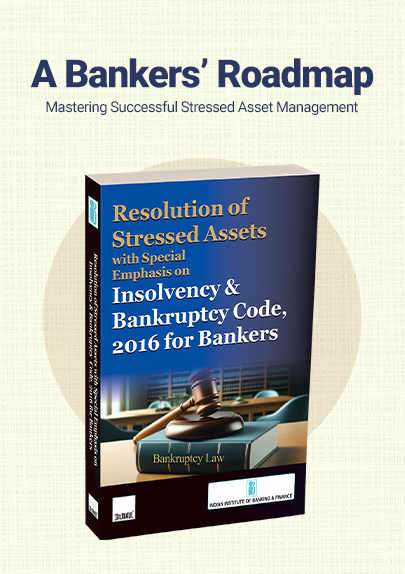Big 4 vs. Other Firms | Making the Right Choice for Your CA Articleship
- CA|Exam|
- 4 Min Read
- By Taxmann
- |
- Last Updated on 20 May, 2024
Choosing between a Big 4 firm and other firms for your CA articleship is a significant decision that can shape your career trajectory. Each path offers distinct advantages and opportunities. The choice between a Big 4 firm and other firms for your CA articleship depends on your career goals, learning preferences, and work-life balance priorities. If you seek high-profile client exposure, extensive training, and brand prestige, a Big 4 firm might be the right choice. However, if you prefer diverse work experience, closer mentorship, and a better work-life balance, a mid-tier or small firm could be more suitable. Consider your long-term goals and personal preferences to make the best decision for your career.
Table of Contents
- Introduction
- Big 4s Work Profiling
- Small/Mid-size Work Profiling
- Mobility Issues
- Stipend
- Trainings and Personality Development
- Job Preference after CA
1. Introduction
The course of Chartered Accountancy regulated by Institute of Chartered Accountants of India (ICAI) is divided into three levels comprising of Foundation, Intermediate and Final. Apart from clearing these three levels, every CA student is required to undergo Articleship, which involves practical training of two years. A student is free to choose any eligible CA firm under the Chartered Accountancy regulations for pursuing the said Articleship.
As per the data published by ICAI, in India, there are approximately 1 lakh CA firms (including branches) handled by 1.50 lakh practising Chartered Accountants. The said firms can be further segregated into Big 4 Accounting firms and other mid size/small size firms.
Big Four refers to the top four global accounting firms providing a wide range of professional services to their clients. The largest accounting firms used to comprise the “Big Eight” firms, but mergers and closures reduced the top tier of companies to “Big Four”. The firms are Deloitte, Ernst & Young (EY), PricewaterhouseCoopers (PwC) and Klynveld Peat Marwick Goerdeler (KPMG).
As per the data reported by National Financial Reporting Authority (NFRA), Big Four and its network firms in India alone perform the audit of listed companies that account for 75% of market capitalisation of India’s stock market. Big 4s mainly offer services such as statutory audit, tax consultancy, mergers and acquisition, due diligence, management consulting, corporate finance and other legal services.
The choice between the Big 4s and small/mid-size firms for CA articleship hovers around points like work profile, departmental transfers, stipend, study leaves, etc. for students.
2. Big 4s Work Profiling
For those who are looking to begin a career in professional services, particularly accounting, Big 4s provide a wide scope of networking and work diversity. Because of its huge employee strength from diverse backgrounds, Big 4s expose a person to various cultures. As Big 4s are constantly engaged with Fortune 500 companies, being a part of Big 4s also helps in understanding the working culture of those companies. However, it must be borne in mind for trainees that generally such firms are reluctant in offering inter-department transfers and hence keep the interns engaged within the same department during their full tenure of three years of practical training, although this acts as an added advantage to have an in-depth knowledge and expertise of a particular domain.
3. Small/Mid-size Work Profiling
Other small/mid-size firms hold presence across India and prominently offer services such as audit and assurance, tax audit, GST audits, internal audit, project finance and other related services. Further, the limitations of non-transfer within various departments as observed in Big 4s are usually avoided in small/mid-size firms that give an intern an opportunity to learn different audits and laws. Usually, the small and mid-size firms are in their growth stage and are constantly grabbing new opportunities. A lot of learning can be assimilated from the journey of such growing firm right from understanding the source of opportunities to implementation of controls after soliciting business from the clients. Optimum enrichment of knowledge in all profiles of laws, tax, audit obtained from such small/mid-size firms shapes the overall personality of an Intern and helps him/her develop varied skills. Further, as can be seen clearly, majority of CAs practising today had done their Articleship from small/mid-size firms, thereby developing leadership skills in the early stages of career.
4. Mobility Issues
All four leading accounting firms are majorly concentrated in metro cities and have presence in very limited tier two cities. Therefore, those interns who prefer to complete their mandatory three years internship from their home city/town due to personal/professional reasons are directed towards the only option of small/mid-size firms.
5. Stipend
One more line of comparison between Big 4s and small/mid-size firms is the amount of stipend offered by them. Usually, the small/mid-size firms offer stipend as per the minimum standards set by the ICAI. In contrast, Big 4s offer stipend which is usually eight to ten times higher than the stipend of small/mid-size
6. Trainings and Personality Development
One of the major advantages of being in Big 4s comes from the regular and top-notch training provided to the articled assistants. Also, one finds the opportunity to interact with corporate mavericks which brings a drastic change in individual’s personality and work etiquettes. These are somewhat missing or may be done at a lower scale in small/mid-size firms.
7. Job Preference after CA
Big 4s while offering jobs give preference to the candidates who had undergone their internship with any of the Big 4s as the said candidates are already exposed to the working pattern which shall resultantly help the firms in saving huge training and recruitment costs. In small/mid-size firms, the conversion ratio of an intern to employee in the same organisation is quite low due to less opportunity of prospective growth in the said firm.
Just like the two sides of the coin, undergoing articleship at the Big 4s or other small firms has its own pros and cons. A student while evaluating the options should give due weightage to the above factors and take a fair decision as such decision shall have an impact, either directly or indirectly, in shaping his/her career. The decision boils down to the individual’s choice and preference.
Disclaimer: The content/information published on the website is only for general information of the user and shall not be construed as legal advice. While the Taxmann has exercised reasonable efforts to ensure the veracity of information/content published, Taxmann shall be under no liability in any manner whatsoever for incorrect information, if any.

Taxmann Publications has a dedicated in-house Research & Editorial Team. This team consists of a team of Chartered Accountants, Company Secretaries, and Lawyers. This team works under the guidance and supervision of editor-in-chief Mr Rakesh Bhargava.
The Research and Editorial Team is responsible for developing reliable and accurate content for the readers. The team follows the six-sigma approach to achieve the benchmark of zero error in its publications and research platforms. The team ensures that the following publication guidelines are thoroughly followed while developing the content:
- The statutory material is obtained only from the authorized and reliable sources
- All the latest developments in the judicial and legislative fields are covered
- Prepare the analytical write-ups on current, controversial, and important issues to help the readers to understand the concept and its implications
- Every content published by Taxmann is complete, accurate and lucid
- All evidence-based statements are supported with proper reference to Section, Circular No., Notification No. or citations
- The golden rules of grammar, style and consistency are thoroughly followed
- Font and size that’s easy to read and remain consistent across all imprint and digital publications are applied








 CA | CS | CMA
CA | CS | CMA


